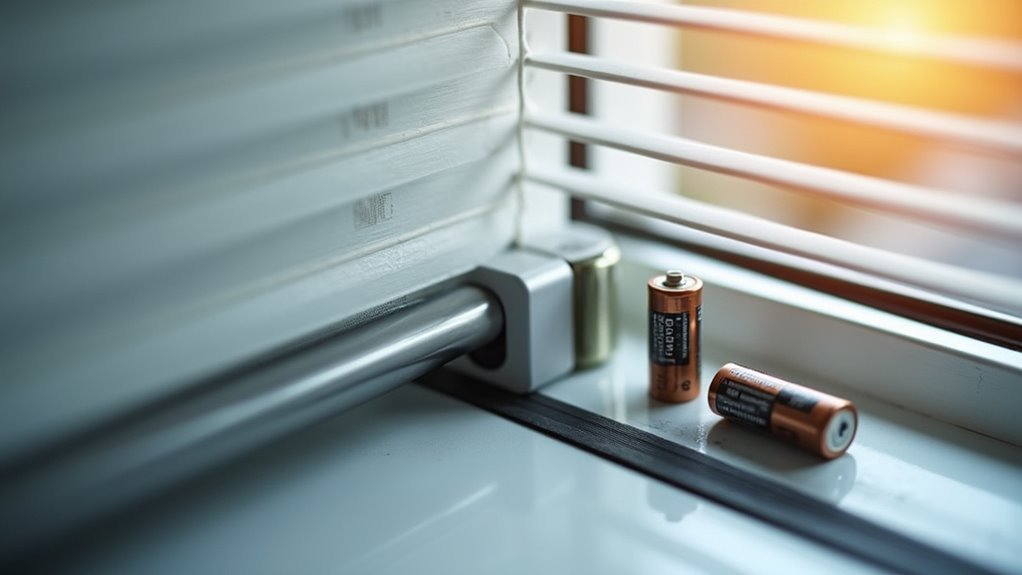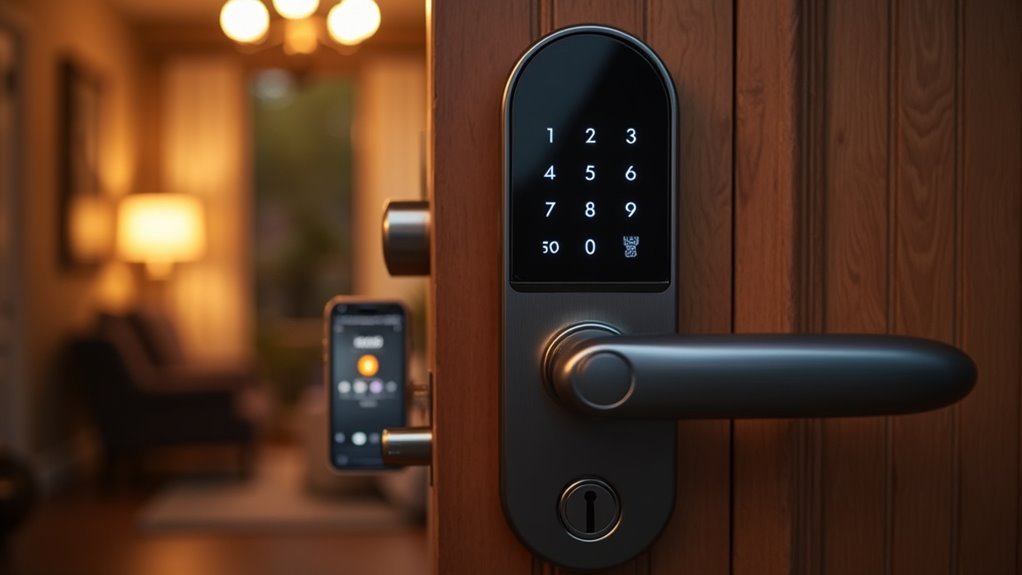You’ve invested in battery-powered blinds to enjoy convenient light control, but you’re probably not getting the most from your investment. Most homeowners make critical mistakes that drain batteries faster, reduce motor lifespan, and lead to frustrating malfunctions. Whether you’re dealing with frequent battery replacements or sluggish operation, there’s a better approach. Five strategic adjustments can transform your automated window treatments from an expensive headache into the seamless solution you expected.
Choose the Right Battery Type for Maximum Performance

When powering your motorized blinds, you’ll face an essential decision between lithium and rechargeable batteries that directly impacts performance and convenience.
Lithium batteries deliver consistent performance with lifespans reaching up to a year, making them ideal for dependable operation. Rechargeable batteries offer sustainable, cost-effective solutions requiring recharges every 4-6 months, reducing frequent replacements over time.
Both battery types excel in different scenarios: lithium for longevity, rechargeable for sustainability and cost-effectiveness over time.
Your power requirements depend greatly on blind specifications. Larger shades consume more energy due to increased weight and size, potentially shortening battery life regardless of your chosen battery types.
Quality batteries prove essential for peak performance, ensuring your motorized blinds operate efficiently without unexpected power failures.
Consider your usage patterns when selecting between disposable lithium or rechargeable options, as frequent operation may favor rechargeable batteries for long-term convenience and cost savings.
Optimize Blind Positioning to Extend Battery Life
Strategic blind positioning greatly reduces battery consumption while maintaining ideal light control throughout your home.
When you optimize blind positioning, you’ll minimize adjustments and markedly reduce battery drain from your motorized shades.
Here’s how to maximize battery life through smart positioning:
- Install lightweight materials in high-traffic areas where you’ll frequently adjust settings, as heavier blinds consume more power during operation.
- Use the tilt function strategically to control natural light without fully raising or lowering your shades, preserving battery power while achieving desired lighting.
- Clean and maintain your blinds regularly to prevent dust buildup that strains motor performance and drains batteries faster.
Position your motorized shades away from obstructions to guarantee smooth operation and reduced motor strain.
Schedule Smart Operations to Reduce Power Consumption

Beyond proper positioning, smart scheduling transforms how your battery-powered blinds consume power throughout the day.
You’ll extend battery life by programming automated operations instead of making frequent manual adjustments. Smart home integration lets you schedule blinds based on sunrise and sunset, maximizing energy savings through natural light optimization.
Automated scheduling reduces manual adjustments and extends battery life while optimizing natural light through smart sunrise-sunset programming.
Set your blinds to close during peak sunlight hours to maintain comfortable indoor temperatures, reducing heating and cooling costs.
You should perform a regular check of schedules seasonally to guarantee ideal performance. Configure gradual opening and closing cycles rather than abrupt movements—this approach will reduce strain on motors and batteries.
These gentle shifts enhance your blinds’ reliability while preserving power. Proper scheduling minimizes unnecessary operations, greatly extending battery lifespan and improving overall system efficiency for long-term performance.
Maintain Clear Window Tracks to Prevent Motor Strain
Dirty window tracks rank among the top causes of premature motor failure in battery-powered blinds.
When dust and debris accumulate in tracks, your motor works harder to move the blinds, draining battery life and causing unnecessary wear.
Regular maintenance guarantees smooth operation and extends your motorized blinds’ lifespan.
Here’s your essential track maintenance routine:
- Clean weekly – Use a soft cloth or vacuum attachment to remove dust and debris without scratching the track surface.
- Inspect monthly – Check for damage, misalignment, or sticky buildup that could impede blind movement.
- Lubricate quarterly – Apply silicone-based spray to enhance performance and reduce motor strain.
You’ll notice improved operation immediately after cleaning window tracks.
This simple maintenance step protects your investment while guaranteeing reliable, quiet performance from your battery-powered blinds.
Monitor Battery Levels and Replace Before Complete Depletion

While most homeowners wait until their blinds stop working entirely, you’ll save yourself frustration and potential motor damage by monitoring battery levels proactively.
Most motorized blinds feature low-battery indicators that alert you before complete depletion occurs. These window treatments typically use rechargeable batteries lasting up to six months with average use, making it easy to establish a monitoring routine.
Check your blinds’ battery levels monthly to maintain peak performance. When indicators show low power, recharge or replace batteries immediately rather than waiting for failure.
For battery-wand models, inspect disposable batteries regularly and replace them when levels drop considerably. Schedule battery maintenance during routine cleaning to prevent sudden power loss and guarantee your motorized blinds operate smoothly year-round.
Frequently Asked Questions
What Are the Disadvantages of Cordless Blinds?
You’ll find cordless blinds harder to operate if you have limited mobility, they’re more expensive than corded options, provide less precise positioning control, and become cumbersome with larger windows.
How Long Do Battery-Powered Blinds Last?
You’ll get 6 months to a year from battery-powered blinds, depending on usage frequency and battery type. Rechargeable batteries last about 6 months between charges, while lithium batteries can approach a full year.
What Are the Disadvantages of Motorized Blinds?
You’ll face higher upfront costs, ongoing battery maintenance, potential noise during operation, possible motor malfunctions, and complex smart home integration issues that can limit your automation options.
How Do You Use Cordless Window Blinds?
You’ll operate cordless window blinds by grasping the bottom rail and gently pulling down to lower them or pushing up to raise them. The one-touch mechanism makes adjusting your blinds effortless and safe.





Leave a Reply